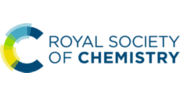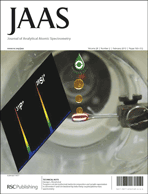As you already know if you are following us on twitter, the European Winter Conference on Plasma Spectrochemistry 2013 was held on February 10 – 15, 2012 in Krakow, Poland. The conference, chaired by JAAS Editorial Board member Joanna Szpunar and co-chaired by Pawel Koscielniak, was very successful, as approximately 500 participants presented 26 invited lectures, 100 oral contributions and more than 220 posters, while more than 25 companies participated in the exhibition. Moreover, several excellent workshops were organised.
Among the highlights of the conference, in addition to the excellent social events where all participants could appreciate the hospitality of Polish people, the Opening ceremony in which JAAS Editorial Board member Norbert Jakubowski received the 2013 European Award for Plasma Spectrochemistry has to be featured. The laureate presented his excellent work on Development of ICP-MS based methods for label free detection of (semi)metals in single cells. Congratulations, Norbert!
JAAS sponsored a poster Award consisting in one personal electronic subscription to JAAS, an iPod Nano and a certificate, and the winner was Georgia Sanabria for her work on an Alternative method for fast and precise Pb isotope ratio determination in crude oil, asphaltenes kerogen and sedimentary rocks by GC-MC-ICPMS, coauthored by Christophe Pécheyran, Sylvain Berail, Olivier F.X. Donard from CNRS / Université de Pau et des Pays de l’Adour. Congratulations!
We would like to remind you that there is a JAAS Themed Issue devoted to this conference. If you want to submit a work that was presented in Krakow, please remember that the deadline for submission is April 1st, 2013.
Finally, the next Winter Conference on Plasma Spectrochemistry will be hosted in Amelia Island (Florida), chaired by JAAS Advisory Board Member Ramon Barnes.

The Chair, Joanna Szpunar and JAAS Editor, May Copsey

Night in Krakow

















